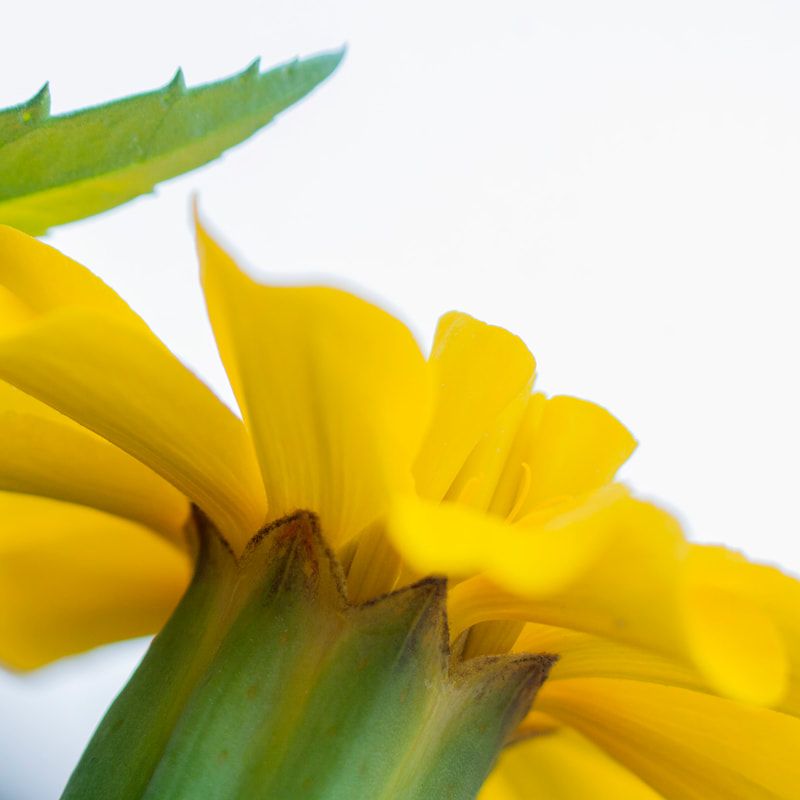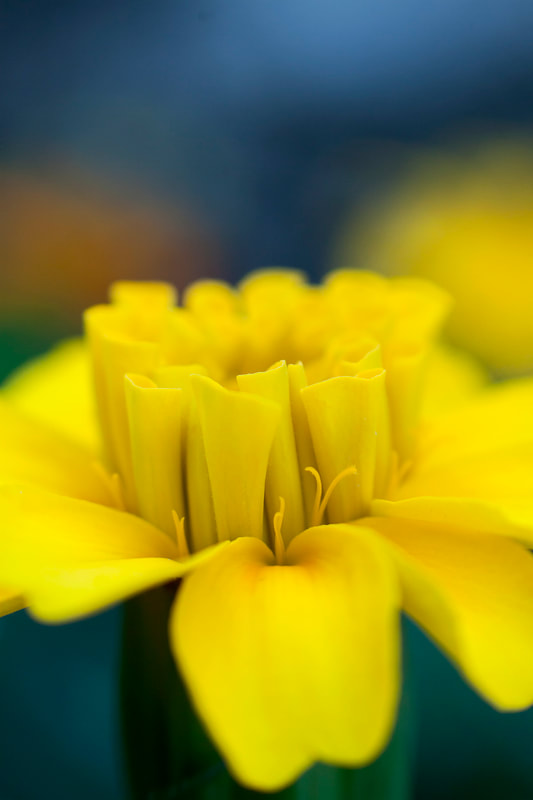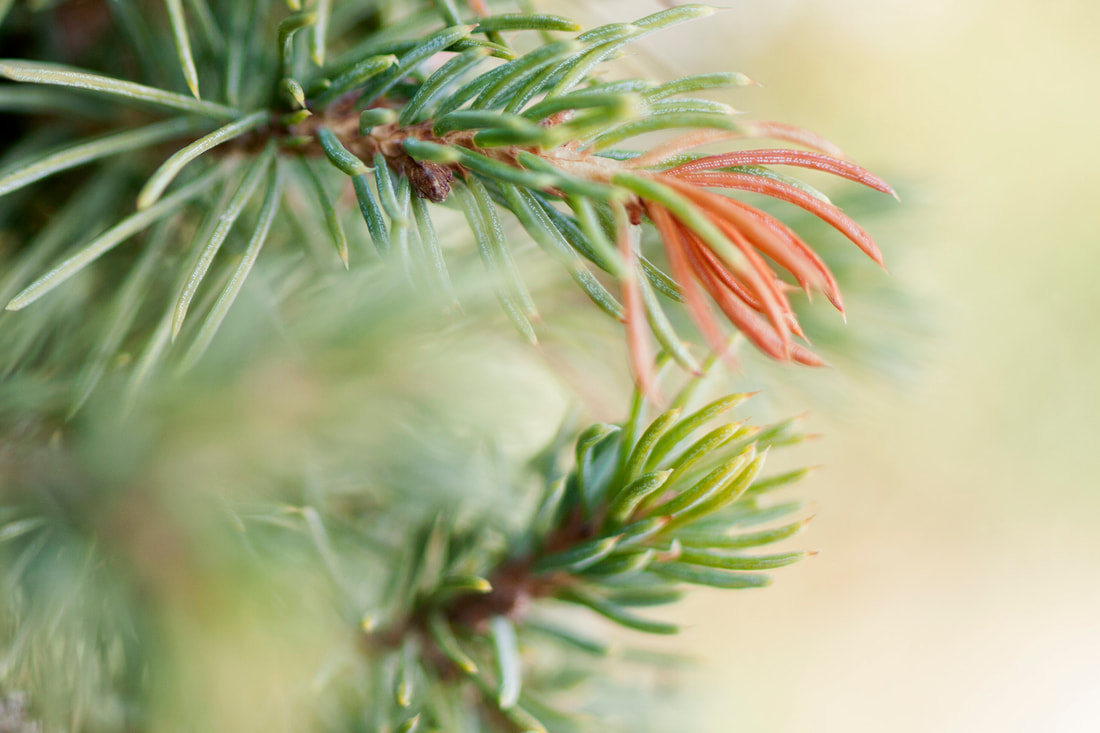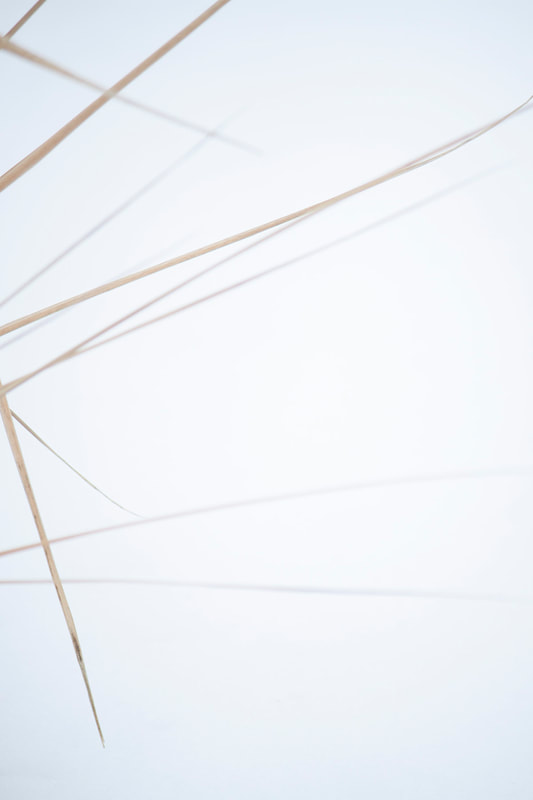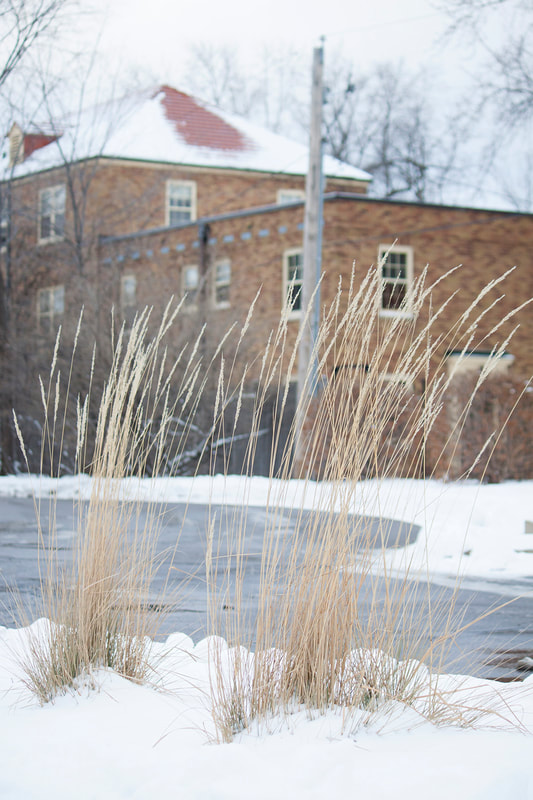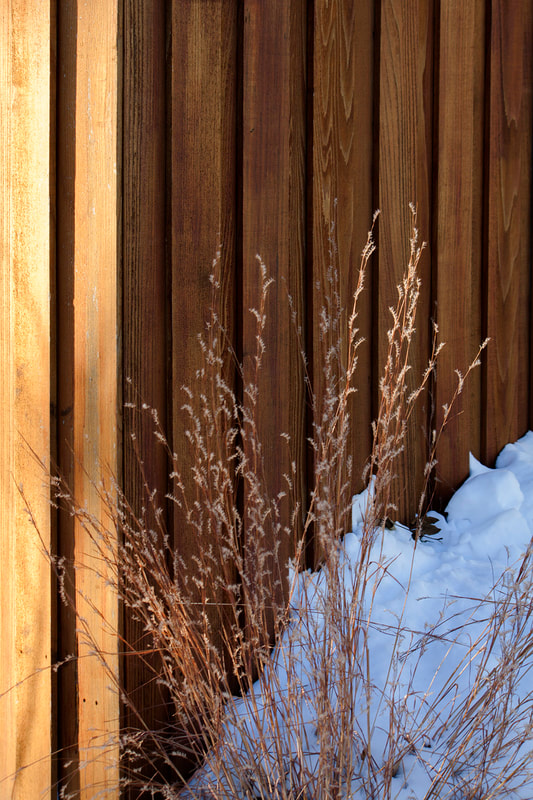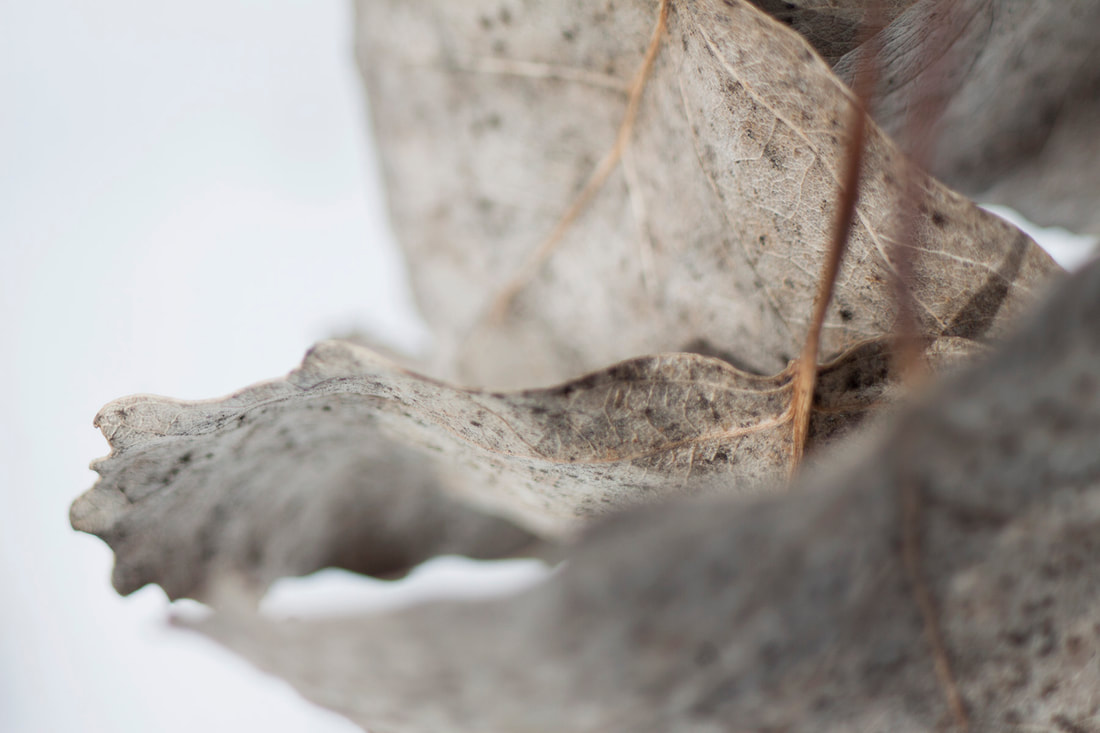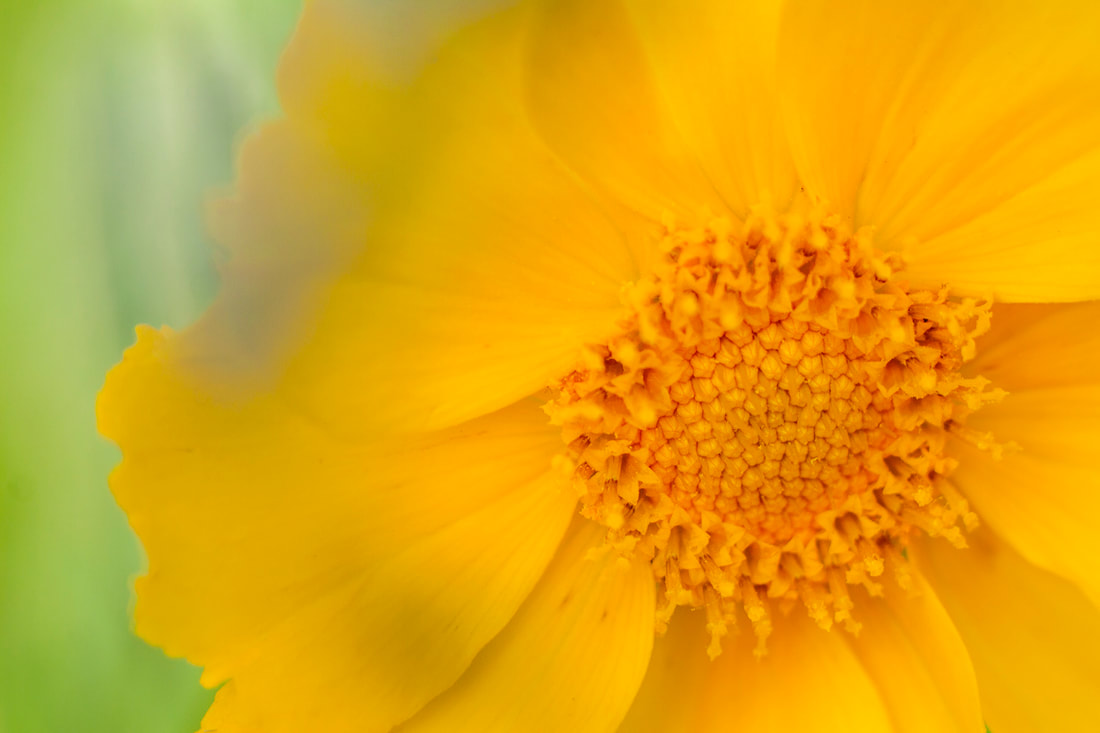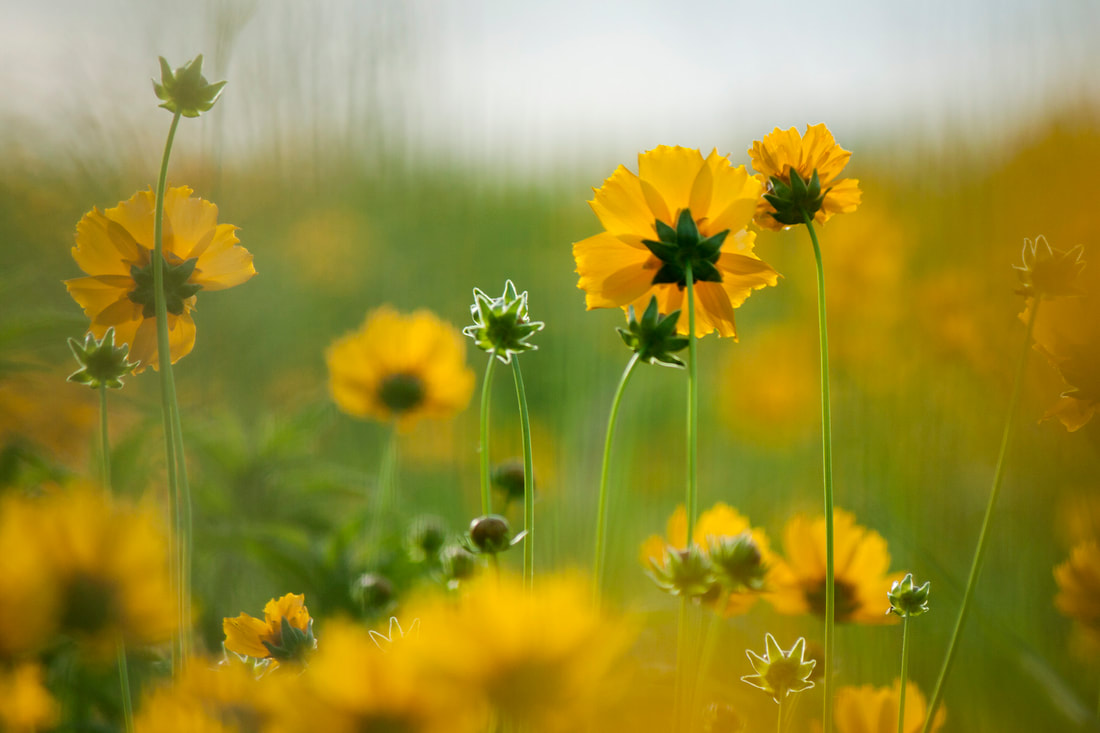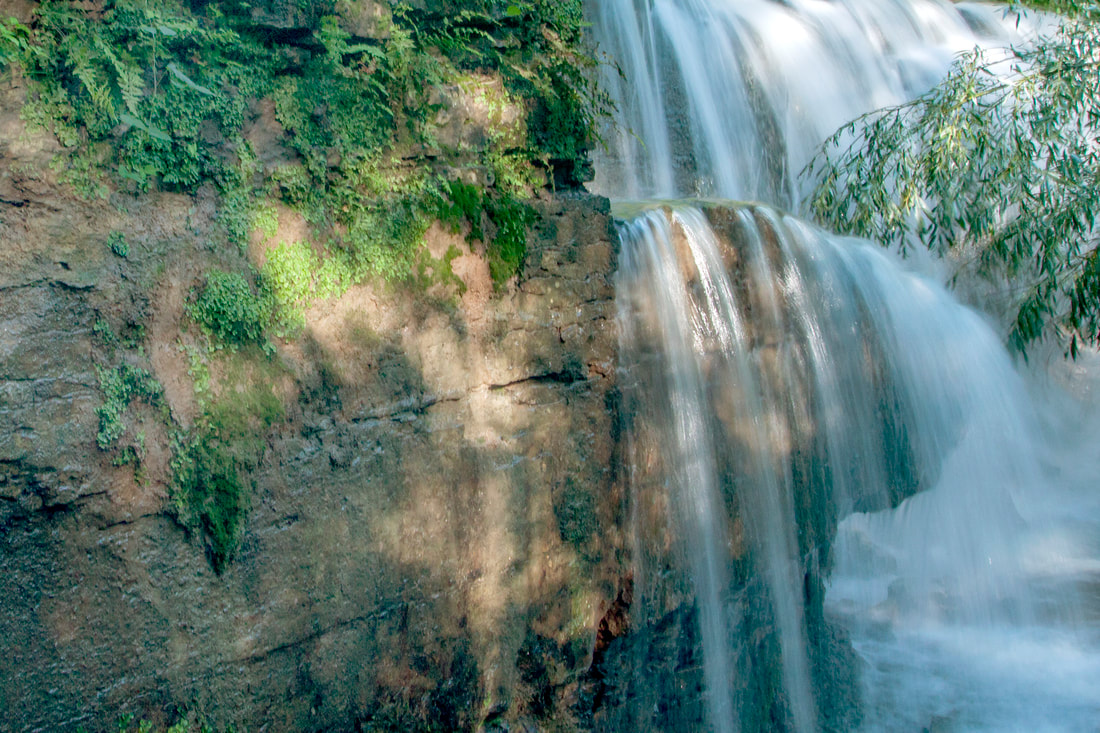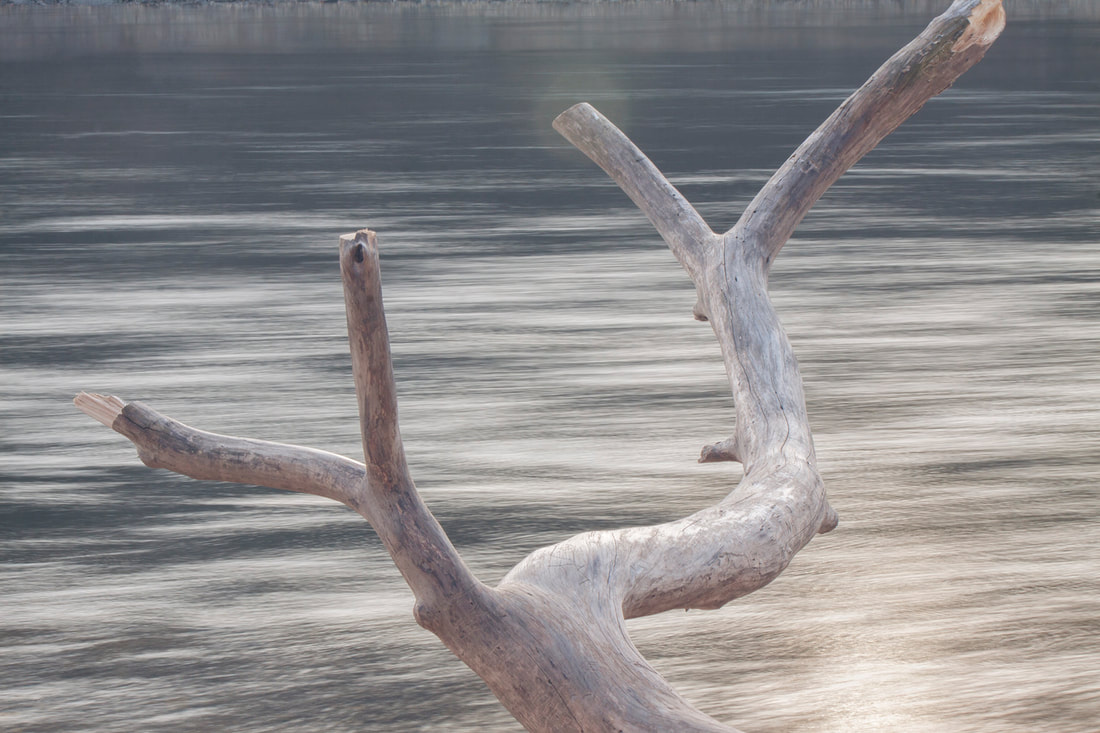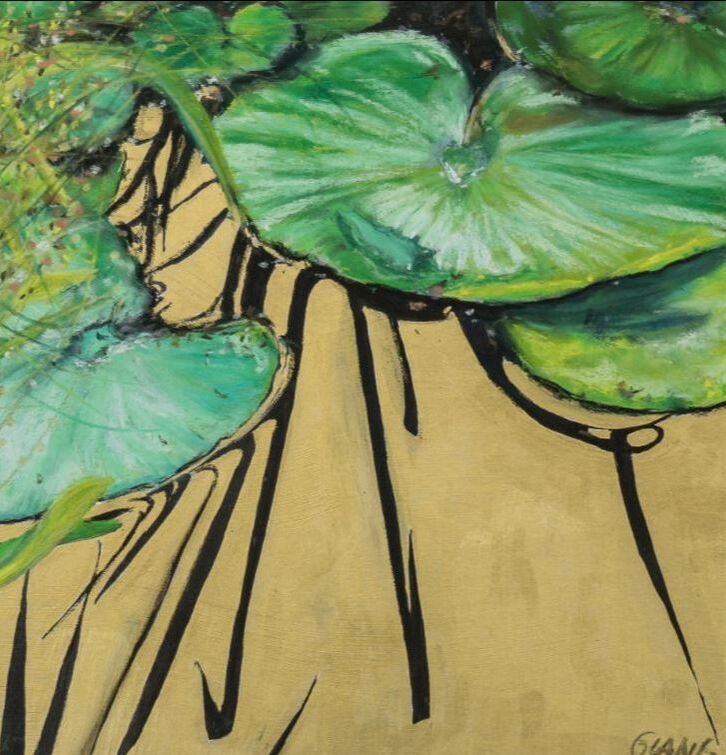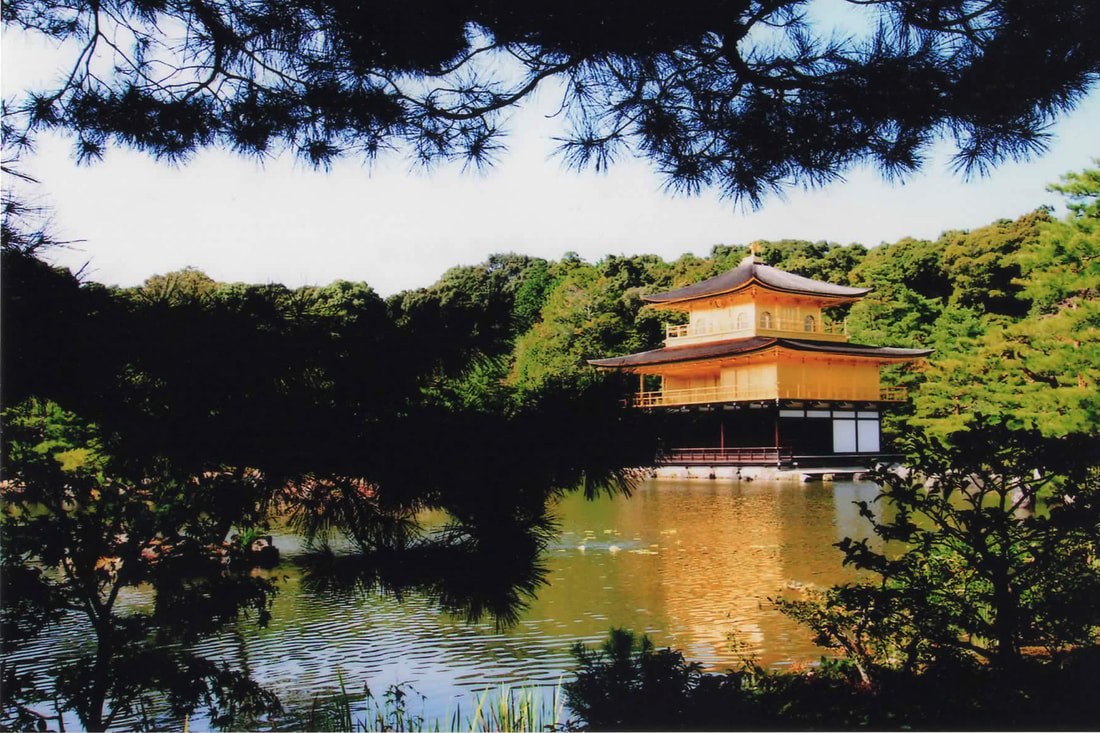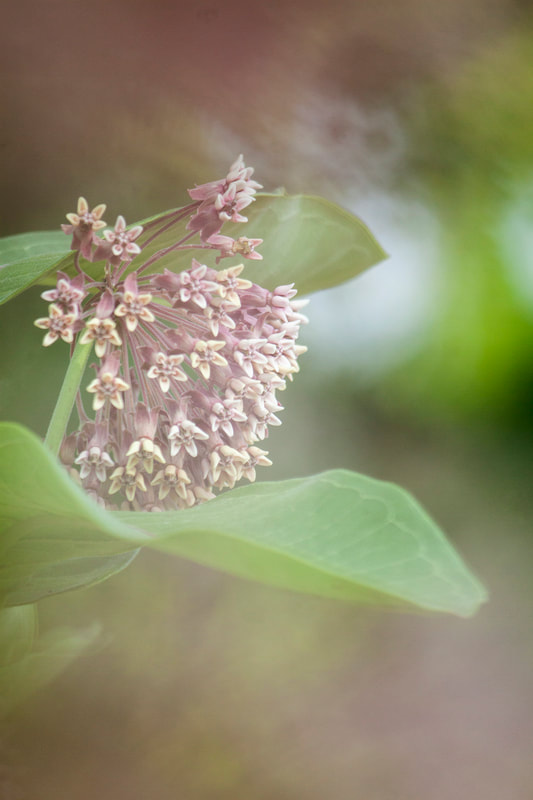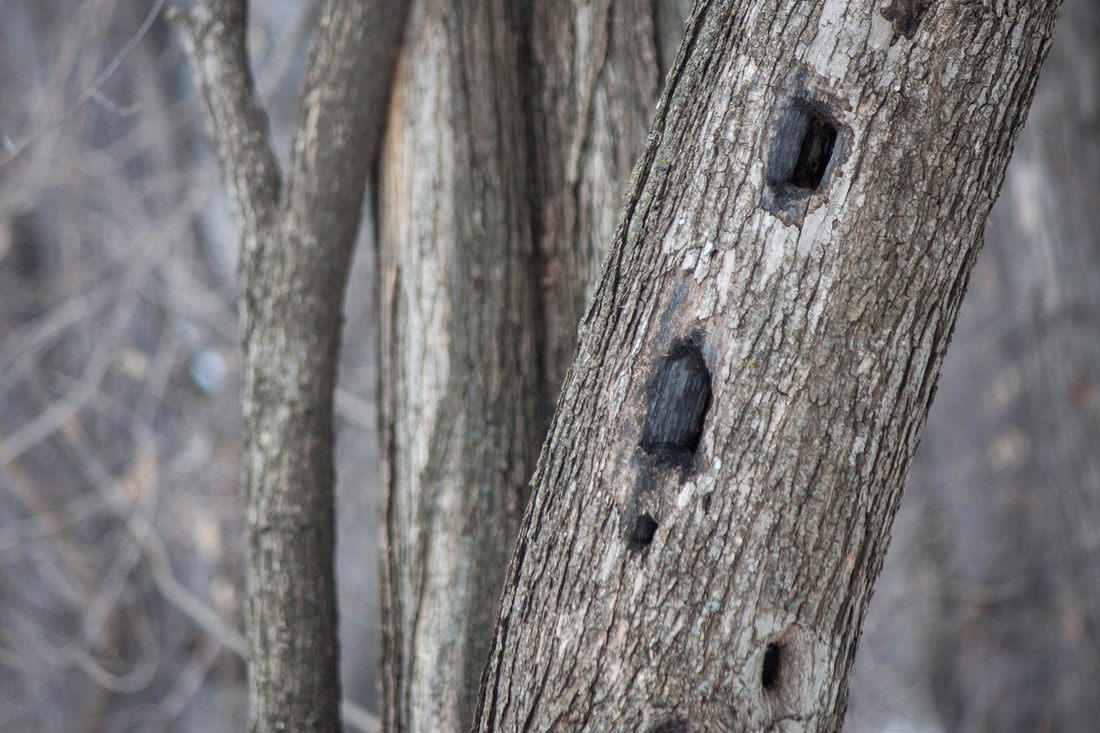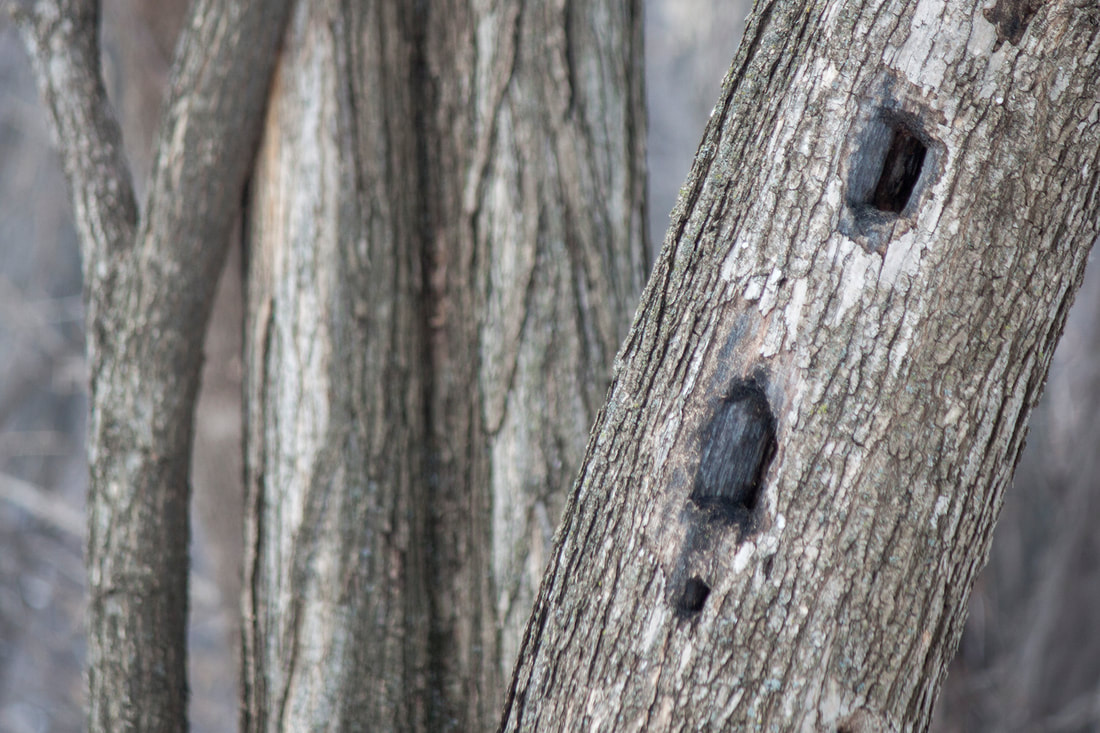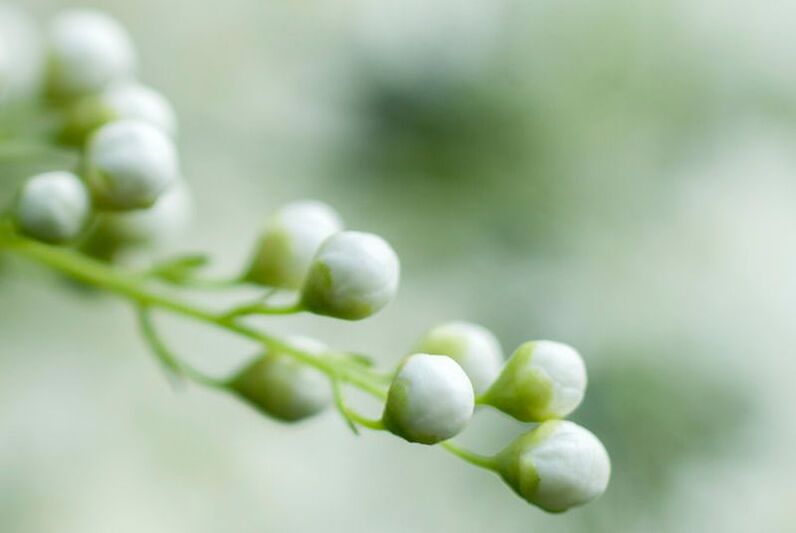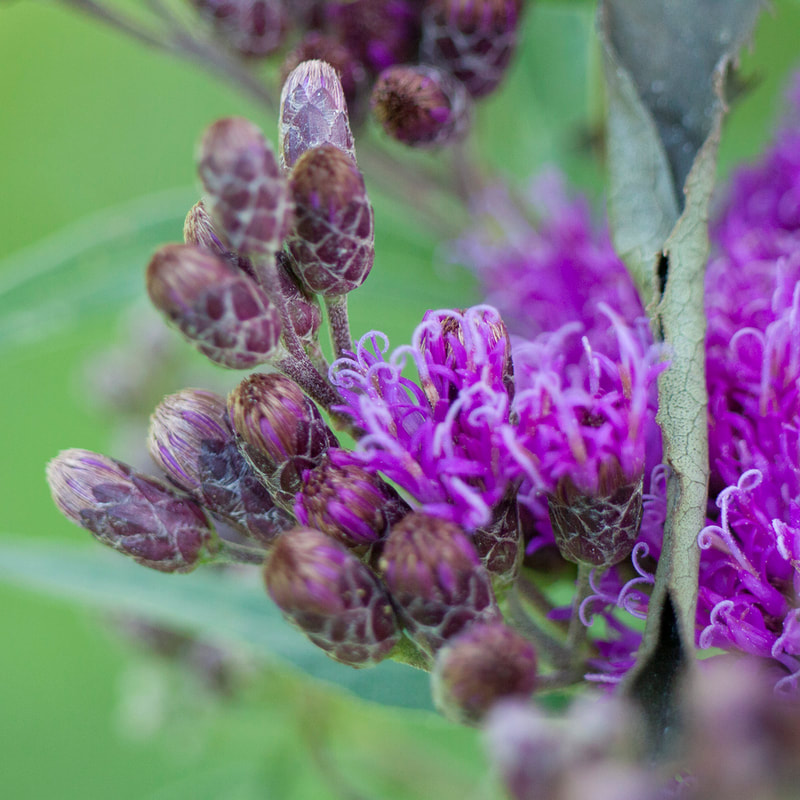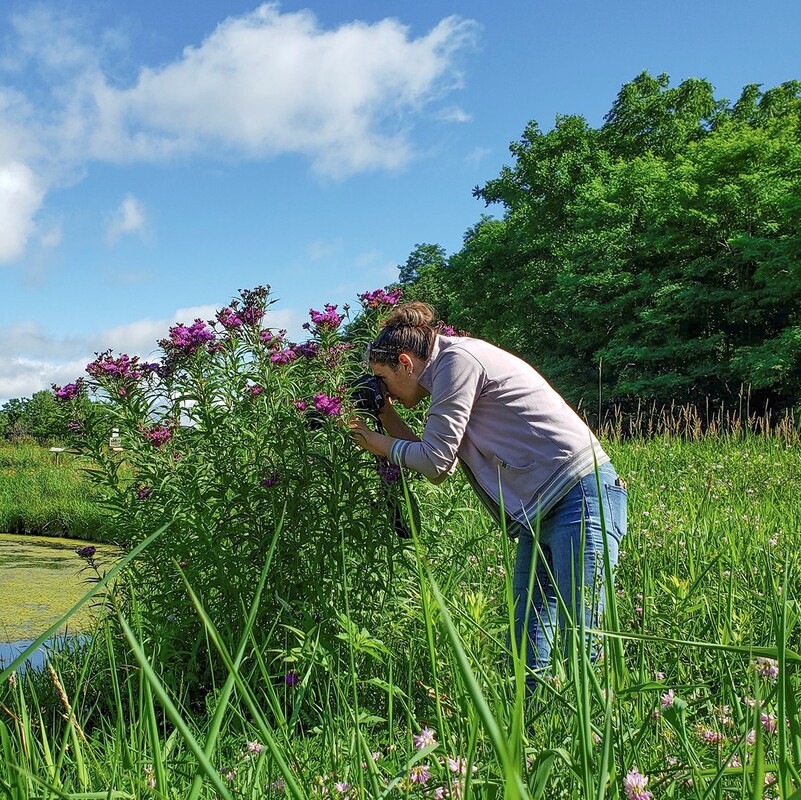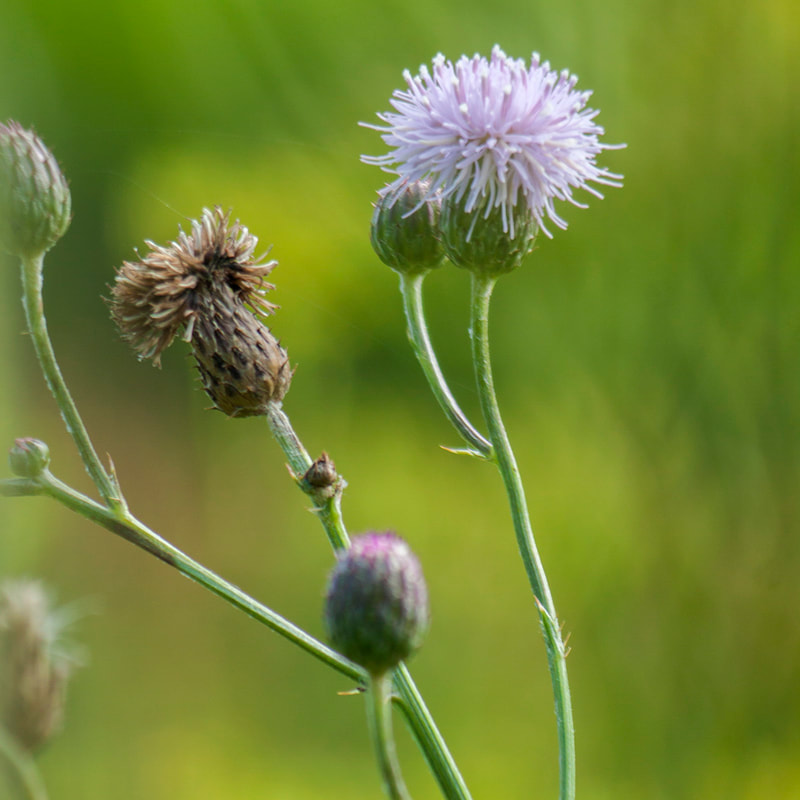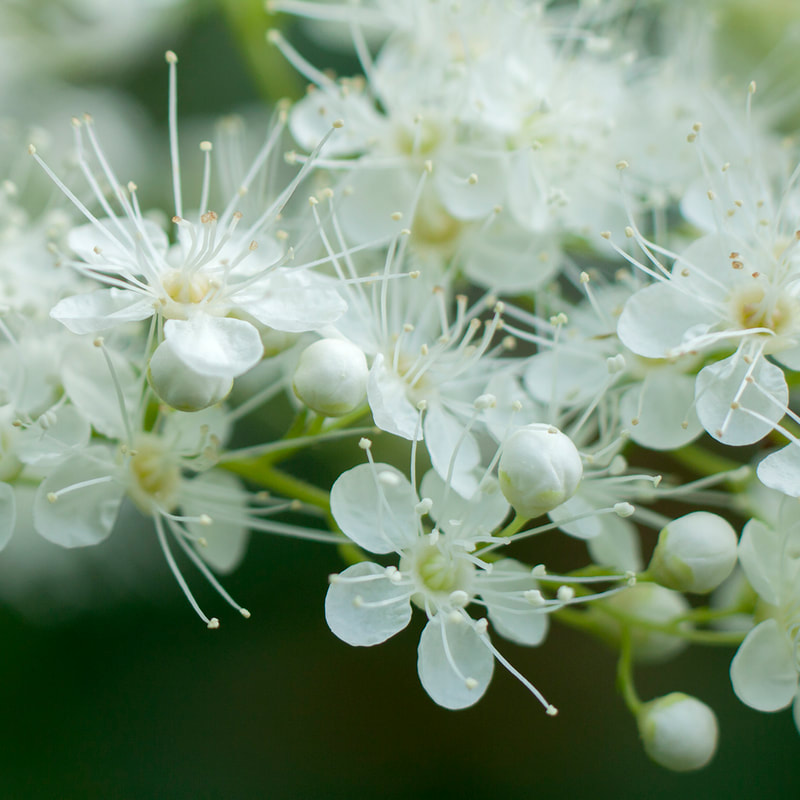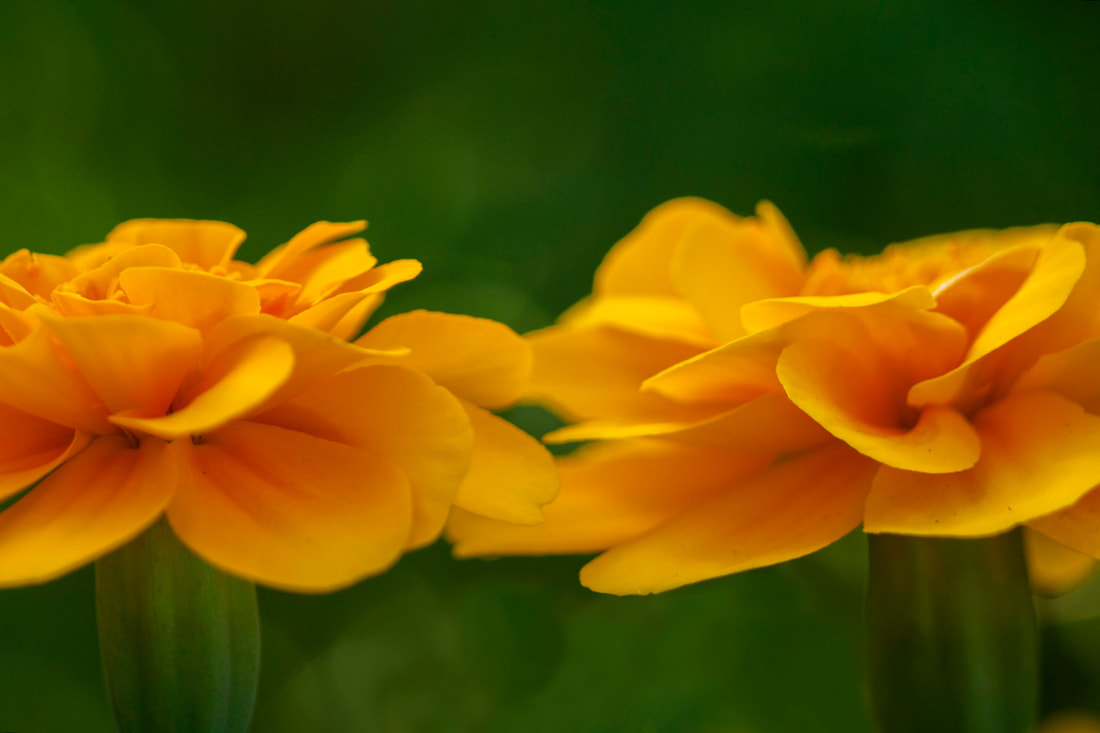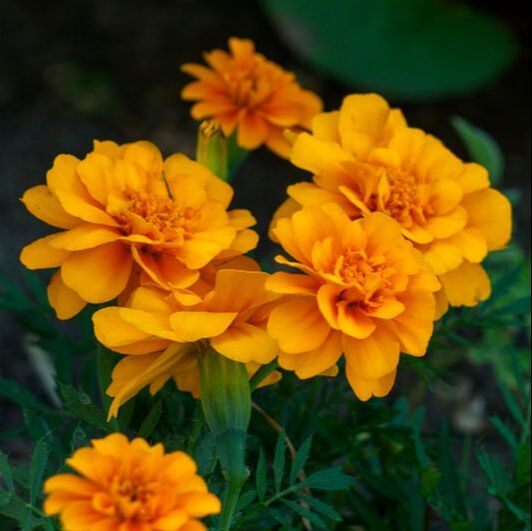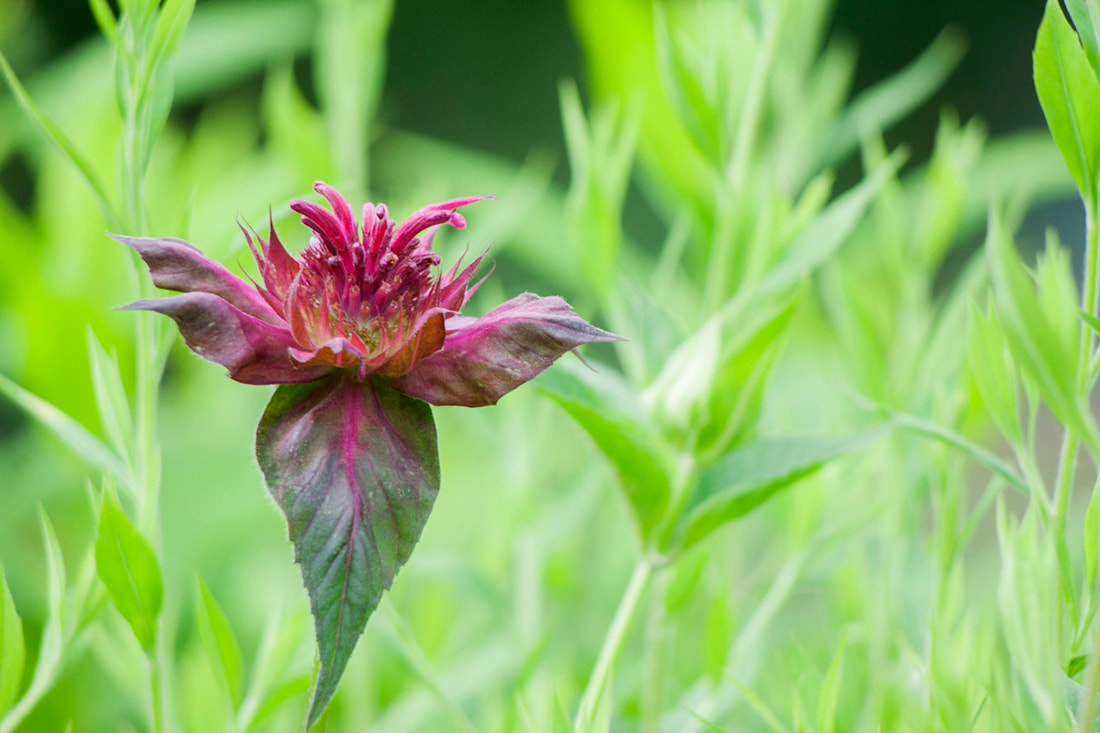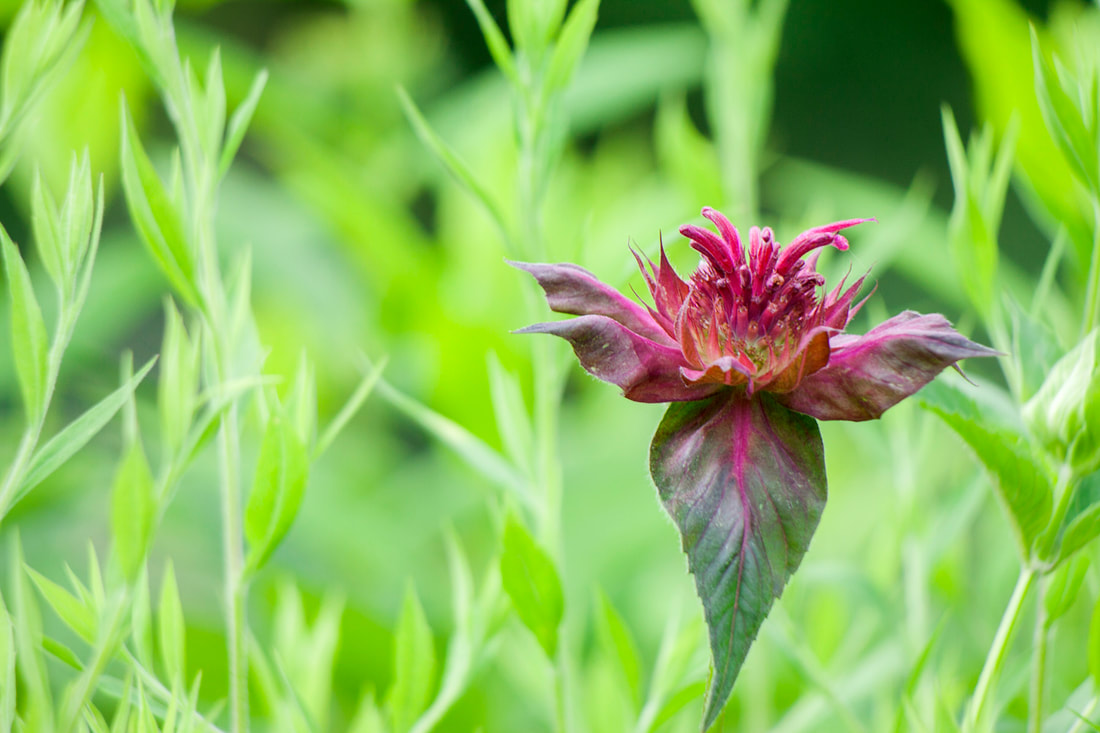Expand your nature connections |
| Texture: Marigold foliage is angular and spiked, but the blossoms are smooth and fluid. Opposing textures adds variety. We can imagine marigolds as hosting a party where all are welcome! | Color: Analogous colors (colors next to each other on the color wheel) typically lend a sense of restfulness, but marigold's bright hues create a more vibrant and youthful quality. We can imagine marigolds as childhood friends who stick together. | Shape: Circles offer a feeling of connection, wholeness, timelessness, and cyclical movement. We can imagine the marigold community as an endless ring of belonging. Read more on shapes here. |
| Mindfulness through photography helped me engage with a subject I'd typically avoid, the marigold taught me to listen deeply and my camera allowed me to see complex beauty where my eyes/brain/nose felt displeased. Channel the message of the marigold in your own practice by photographing something that disgusts you. Try deepening your curiosity about something you might initially overlook or be turned off by. As you photograph, notice both the subject and your own feelings, for better or worse. Stay attuned to subtle shifts that create an opening, a softening when you turn your attention to how your camera sees this subject. |
What "disgusting" object will you connect with through mindful photography?
Consider Culture
A growing number of nature photographers, challenged by destruction of our planet, have been inspired by a culture of slowing down, using cameras mindfully, and caring for the planet as we make our images. With this perspective, many nature photographers aim to create intimate landscapes, subtle beauty, and a sense of peace.
Most of us, without thinking, believe the nature images we share are Universal. We rarely question our own narratives, but rather set them as the standard with which we compare everything else. But culture exists within nature photography and the abstract concept "peace" is shaped by our experiences and culture.
Most of us, without thinking, believe the nature images we share are Universal. We rarely question our own narratives, but rather set them as the standard with which we compare everything else. But culture exists within nature photography and the abstract concept "peace" is shaped by our experiences and culture.
| I'm not disagreeing with the idea of creating peaceful imagery, but I continually have this nagging (but funny and kind) voice in my head from my time working as an educator. That voice is the voice of Cornelius Minor. Cornelius is "a Brooklyn-based educator. He works with teachers, school leaders, and leaders of community-based organizations to support equitable literacy reform in cities (and sometimes villages) across the globe." |
During a training I attended with Cornelius, a fellow teacher commented on how she desired a more "peaceful" classroom. He asked her to describe what that classroom looked like. I can’t remember her exact words, but it was something to the effect of ordered, quiet, students on task. Ah, yes, that’s the pinnacle of a well-run classroom, we can surely agree on that, right?
Cornelius then asked us to consider that not everyone would define a peaceful classroom in that way. Wait, what!? My brain started scanning my experiences for a day that I felt the most relaxed and I realized that day, for me, involved debate, raised voices, and lots of laughter.
On this favorite day, we were experimenting with a short unit on art and emotions. I displayed “Sunny Day,” by Kenyan artist Mary Ogembo.
Cornelius then asked us to consider that not everyone would define a peaceful classroom in that way. Wait, what!? My brain started scanning my experiences for a day that I felt the most relaxed and I realized that day, for me, involved debate, raised voices, and lots of laughter.
On this favorite day, we were experimenting with a short unit on art and emotions. I displayed “Sunny Day,” by Kenyan artist Mary Ogembo.
| Many South and South East Asians said: “Happy. Sunshine. Warm. Easy. Ahhhhh, feels good!!” Many East Africans said: “Hot. Tired. Working.” One particularly outspoken West African woman stood and, with her whole body, said: “No good. Working. Working. Hot! Too hot! Tired! No good!! |
These adults with life experience in the Congo, Somalia, Kenya, Bhutan, Thailand, and Burma (Myanmar) seemed to be experiencing the symbols in this painting from their own cultural and experiential perspectives. And that was more than ok! No one got angry, no one refused to work with another, no one stormed out of the room. They each shared their view points and we had an opportunity to see the painting through different lenses.
Over the years, I've realized we can’t ever truly experience what another is feeling or accurately see the world through another person’s lens, but we can get glimpses into other's perspectives if we keep an open mind and heart.
It took me a year or two after this experience to understand that my students weren't the only ones with cultures that influenced their perceptions.
Over the years, I've realized we can’t ever truly experience what another is feeling or accurately see the world through another person’s lens, but we can get glimpses into other's perspectives if we keep an open mind and heart.
It took me a year or two after this experience to understand that my students weren't the only ones with cultures that influenced their perceptions.
From your perspective, which of the images would you describe as peaceful? Why?
To expand your perspective, take a look through someone else's images and consider:
And with that expanded perspective, consider:
For nature photographers who want to help shape a more nurturing culture, it's important we acknowledge that photography can provide expansion to our lives when we refuse to limit ourselves and others.
- What personal experiences may shape my interpretations of their images?
- How are their cultural backgrounds similar or different?
- Have I only noticed images and stories that reflect similar perspectives? Or a variety?
And with that expanded perspective, consider:
- How can I be more intentional about exploring unfamiliar perspectives?
- How can I share the work of underrepresented photographers so they can tell their own stories?
For nature photographers who want to help shape a more nurturing culture, it's important we acknowledge that photography can provide expansion to our lives when we refuse to limit ourselves and others.
What cultural perspectives influence your life and photography practice?
EXPANDing "nature Photographer"
Because I am woman who enjoys photographing solo, I often struggle with calling myself a nature photographer. Over the years, I've grappled comparing myself with the image I have of nature photographers who go out into wild locations in extreme conditions. With my circumstances and desire to use nature photography to restore my body and mind, I had to accept that I need to keep my practice simple and safe. Here are a few things I do to keep myself comfortable out in nature, even if not typical practices for many nature photographers.
I travel light and keep my practice simple.
I keep daylight hours.
I center myself and my relationship with nature.
I honor my comfort-zone.
- Visit the Slow Photography Movement's blog to read my article "Relational Nature Photography."
I keep daylight hours.
- Visit the Slow Photography Movement's gallery "There is No Bad Light" for a collection of images made in full sun.
I center myself and my relationship with nature.
- Read my blog using lines and shapes to notice and honor your subject's energy.
I honor my comfort-zone.
- Read below for the benefits of practicing nature photography in the city.
Staying close to home this winter provided me a bit of comfort and connection with the natural world during a season short on daylight hours. At first, I struggled with the idea that what I was practicing was nature photography, but overtime I realized that there are many ways to connect with nature and many ways to serve as nature photographer.
Not all of us have the same relationship with the outdoors. That doesn't make those of us who take fewer risks are less worthy storytellers or nature lovers. Let's not be afraid to share, witness, and embrace the unconventional stories. Instead, let's allow and celebrate complexity within nature photography and the locations where we feel a connection.
When have you expanded your definition of traditional labels?
choose supportive styles
If we are paying attention, nature has a way of supporting our ever-changing emotional needs.
Macro photography is my main style of expression. I find that when I take time to appreciate the little things, I'm less likely to take life for granted. When I focus on everyday beauty, I find contentment no matter where I am.
Macro photography is my main style of expression. I find that when I take time to appreciate the little things, I'm less likely to take life for granted. When I focus on everyday beauty, I find contentment no matter where I am.
Macro supports me with feelings of closeness and simplicity.
Try using macro when you're feeling overwhelmed and need comfort.
Try using macro when you're feeling overwhelmed and need comfort.
Landscapes support me with feelings of interconnection and expansion.
Try using landscapes when you're feeling ungrounded and need connection.
Try using landscapes when you're feeling ungrounded and need connection.
If you're feeling overwhelmed or want to focus on comfort, try framing the little details around you. If you're feeling ungrounded or want to focus on connection, try framing the bigger picture. If you're not sure how you feel or what you want, try both and see what may arise.
How will you use different photos styles to support you?
Embrace Subtle Beauty
If we are paying attention, our personal stories have the possibility of influencing our photographic style.
Point-and-shoot was my basic strategy for making images the first many years of my photography practice - even after going to school for photography, knowing all the rules, and possessing the technical skills. Don't get me wrong, there are benefits to making snapshots and I still make them 21 years post-graduation. Practice is vital for refining your art, but continual refinement and clear intentions is what differentiates snapshots from art.
It wasn't until I had life experience, a refined perspective on beauty, and something I felt I needed to say that I finally began to use my camera settings and the rules of composition in an intentional way. In other words, I may have known what I was doing, but I didn't know why or what I was trying to say.
Recently, I was reflecting on whether or not my imagers were communicating my intentions when artist & poet Gabriele Glang gifted me with this compliment, "Imperfection, wabi-sabi, haiku - I'm thinking your images are beautiful because they are spare, focused, elegant, concise. In fact, they are poems, to my mind."
Wabi-sabi and haiku are Japanese artistic concepts, and my photographic style was informed by a life-changing experience in Japan. Feeling seen in this way inspired me to share a few ideas about how I create photographic poems.
Point-and-shoot was my basic strategy for making images the first many years of my photography practice - even after going to school for photography, knowing all the rules, and possessing the technical skills. Don't get me wrong, there are benefits to making snapshots and I still make them 21 years post-graduation. Practice is vital for refining your art, but continual refinement and clear intentions is what differentiates snapshots from art.
It wasn't until I had life experience, a refined perspective on beauty, and something I felt I needed to say that I finally began to use my camera settings and the rules of composition in an intentional way. In other words, I may have known what I was doing, but I didn't know why or what I was trying to say.
Recently, I was reflecting on whether or not my imagers were communicating my intentions when artist & poet Gabriele Glang gifted me with this compliment, "Imperfection, wabi-sabi, haiku - I'm thinking your images are beautiful because they are spare, focused, elegant, concise. In fact, they are poems, to my mind."
Wabi-sabi and haiku are Japanese artistic concepts, and my photographic style was informed by a life-changing experience in Japan. Feeling seen in this way inspired me to share a few ideas about how I create photographic poems.
| Before I share my ideas, let's take a moment to breathe in this elegant painting by Gabriele from her "Pond" series, where she returned to the same pond over and over, sensing its subtle beauty through the seasons. Visit Gabriele's poetic pond paintings here. |
| Back in Japan, I learned about the design concept miegakure (hide and reveal) which gave me the seed for how I wanted to transform my photographic story. Miegakure is used to create awe-inspiring gardens that encourage visitors to slow down, to contemplate, to experience mystery and anticipation. A similar approach is seen in Yamato-e style art, where clouds and mist are used to obscure parts of narratives told through large scroll or screen paintings. The idea behind this aesthetic style reminds the viewer that life is a mystery, that imagination is vital, and it suggests you'll never know the complete story. |
| Enjoy a few of my favorite Japanese photographers: Nyoro: See their work here. Follow them on Instagram here. Eiichiro: Watch their short film here. Follow them on Instagram here. akiyama: See their work here. Follow them on Instagram here. fujicco: Follow them on Twitter here. Follow them on Instagram here. |
Experiencing the beauty of mystery in my own life, this aesthetic resonated with me - it even helped me reframe some of the most difficult events in my life. Over the years, I have been learning to be less concerned with controlling situations and demanding tidy answers to life circumstances, preferring to instead to revel in a slow unfolding of this human drama.
And with that intention for my life, I have been experimenting and slowly refining my artistic voice to express delight in our world's subtle, mysterious beauty.
Here are a few ideas for adding subtle beauty to your images:
And with that intention for my life, I have been experimenting and slowly refining my artistic voice to express delight in our world's subtle, mysterious beauty.
Here are a few ideas for adding subtle beauty to your images:
| Try looking for hidden subjects. Often, I find my subject nestled within shrubs, rocks, leaves, etc. Use the "nest" to hide elements of your main subject. For this image, I intentionally placed my jade rock (also from Japan) within my houseplant during a mindful photography event hosted by Tonya Peele on the meditation app, Insight Timer. | Try breathing on the lens (put a UV filter on your lens to prevent damage) before making your image - the results are unpredictable, uncontrollable, and impermanent. And also soft and subtle. For a deeper perspective on the breath and why I believe subtle beauty is important to the culture of nature photography, read my article "Relational Nature Photography" on the Slow Photography Movement blog. |
| Try framing your main subject through foliage in the foreground, right up close to your lens. This gives a "painterly" effect. I was able to do this much more intentionally after watching Kathleen Clemons' course "Creating Painterly Photographs" on Creative Live. | Try simplifying your composition by getting clear about your subject and using your camera to support your intention. For ideas on how your camera can help you, read my blog "Into Simplicity". |
We have all been directly confronted with life's mysteries as we live our way through a global pandemic. When you find yourself trying to control or rush to figure it all out, try taking a stroll through nature and turning your concerns over to her subtle beauty.
How will you bring subtle beauty to your images?
Nourish your LIfe and Photo Practice
Kim Manley Ort and her 2021 project "Seeing Clearly" prompted me to listen for sounds out in the woods on a winter afternoon. With that intention, I heard the woodpeckers.
Specifically, I heard a Pileated Woodpecker. For a more biological and ecological perspective on this amazing bird, please read this creatively written blog by Ken Bevis, a DNR Stewardship Wildlife Biologist, "Just About the Coolest Bird Around: the Pileated Woodpecker."
Specifically, I heard a Pileated Woodpecker. For a more biological and ecological perspective on this amazing bird, please read this creatively written blog by Ken Bevis, a DNR Stewardship Wildlife Biologist, "Just About the Coolest Bird Around: the Pileated Woodpecker."
| In the woods, I heard the knocking first and, when I froze on the path to locate the source, I heard tree bark raining down directly in front of me. And there was Woody, pecking away! Side note: I do not have the gear or the skill for bird photography. Please enjoy this playful image by Jeanette Mayo. See more of Jeanette's work here. |
I watched this woodpecker continue to peck at the exact same spot. Sure, there were micro-movements, but this bird never jumped trees or even to a new spot on the same tree.
Woodpeckers don’t move when nourishment is being received and, when nourishment ends, they fly away, laughing joyfully!
During my photo practice that afternoon, I followed the woodpecker's lead and made micro-movements between exposures. Here's an example of how minor movements can change an image. What do you notice about how the micro-movements changed these two?
Woodpeckers don’t move when nourishment is being received and, when nourishment ends, they fly away, laughing joyfully!
During my photo practice that afternoon, I followed the woodpecker's lead and made micro-movements between exposures. Here's an example of how minor movements can change an image. What do you notice about how the micro-movements changed these two?
Here are additional perspectives to consider:
- What happens when you get closer or zoom as mentioned in the simplicity blog?
- What do the shapes tell you about your subject as mentioned in the lines blog?
- What is your subject trying to tell you and how can you use the rule of thirds blog to communicate that message?
Spending the afternoon learning from the woodpecker, I've decided to experience 2021 with greater woodpecker-like intention put effort into experiences that provide (more often than not) nourishment. And when it's time to move on, I will do so with (at least a little bit) of gratitude and laughter.
What nourishing situations will you put your effort toward in 2021?
To share creativity requires collaboration, vulnerability, and perspective.
The photo collection below is a project inspired by fellow artist, Ann Taylor. Ann took the people portraits. I took the plant portraits.
This project is a demonstration of collaboration...and mutual admiration.
This experience offered a lesson on vulnerability.
Theses photos are an experiment in perspective.
Many thanks to Ann for sharing this day with me, for photographing me so beautifully, and for bringing new insight to a beauty lover's perspective.
This project is a demonstration of collaboration...and mutual admiration.
This experience offered a lesson on vulnerability.
Theses photos are an experiment in perspective.
Many thanks to Ann for sharing this day with me, for photographing me so beautifully, and for bringing new insight to a beauty lover's perspective.
How will you share your creative voice, collaborative spirit, heartfelt vulnerability, and unique perspective with the world?
Notice your subject, tune into movement, and experiment with lines.
The photographic strategy of using leading lines to pull in the viewer's attention is a common strategy for composing images that create interest. The idea behind leading lines is to make an image that leads the eye to the main subject of the image. A leading line paves an easy path for the eye to follow through different elements of a photo.
Just as the rule of thirds, which can be read by clicking here, leading lines is another concept that can easily be found on Google, but here I'm using shapes as lines. Shapes still keep the eye moving, and they also have the potential to communicate a more personal narrative while enhancing the traditional approach with greater meaning.
Before I move into my personal insights, I want to be clear: this is by no means the only way to view leading lines, shapes, movement, or any abstract concept. Feel free to take what you want and leave the rest and/or adapt it to your own culture, values, spiritual beliefs, and personal experience. Continue reading below for examples of how to use lines and shapes to tell a story.
Just as the rule of thirds, which can be read by clicking here, leading lines is another concept that can easily be found on Google, but here I'm using shapes as lines. Shapes still keep the eye moving, and they also have the potential to communicate a more personal narrative while enhancing the traditional approach with greater meaning.
Before I move into my personal insights, I want to be clear: this is by no means the only way to view leading lines, shapes, movement, or any abstract concept. Feel free to take what you want and leave the rest and/or adapt it to your own culture, values, spiritual beliefs, and personal experience. Continue reading below for examples of how to use lines and shapes to tell a story.
Horizontal Lines: Stable, Calm, Balanced
Two or more subjects next to each other on a horizontal line create a sense of stability, calm, balance. Imagine the horizontal line as balancing scales perfectly balanced.
In the images below, I find the horizontal composition of the yellow marigolds more pleasing than the purple coneflower. The marigolds have a more connected, peaceful presence. Their inherent shape and unique essence work well for creating stability, calm, and balance.
Interestingly enough, finding two or more coneflower blossoms that were naturally in a horizontal line from each other was a real challenge. After this experiment, I'm quite certain they don't have any intention to be viewed as stable, calm, and balanced!
What nature subjects offer you stable, calm, and balanced feelings?
In the images below, I find the horizontal composition of the yellow marigolds more pleasing than the purple coneflower. The marigolds have a more connected, peaceful presence. Their inherent shape and unique essence work well for creating stability, calm, and balance.
Interestingly enough, finding two or more coneflower blossoms that were naturally in a horizontal line from each other was a real challenge. After this experiment, I'm quite certain they don't have any intention to be viewed as stable, calm, and balanced!
What nature subjects offer you stable, calm, and balanced feelings?
Vertical Lines: Dignified, Powerful, Majestic
| Two or more subjects on a vertical line create a dignified, powerful, majestic image. Imagine the vertical line as a majestic pine tree. It was fairly easy to frame both of these flowers species in a vertical line, though finding more than two lined up was easier for the marigolds. In any case, I feel both flowers pull off majesty. |
What other nature subjects offer you dignified, powerful, majestic feelings?
Diagonal Lines: Active, Dramatic, add tension
Two or more (three or more is my preference) subjects on a diagonal line create an active, dramatic scene that builds tension. Imagine the diagonal line as steps to climb.
I think both flowers are able to pull off the drama in the images below, but here the marigolds are benefited by the dark, contrasting background and the diagonal running both ways - one with the full blossoms and one with the unopened buds. Although it was easy to frame both this way, I prefer the drama and movement created by the coneflower blossoms and there were a multitude of natural options for finding them on the diagonal.
What nature subjects offer you stable, calm, and balanced feelings?
I think both flowers are able to pull off the drama in the images below, but here the marigolds are benefited by the dark, contrasting background and the diagonal running both ways - one with the full blossoms and one with the unopened buds. Although it was easy to frame both this way, I prefer the drama and movement created by the coneflower blossoms and there were a multitude of natural options for finding them on the diagonal.
What nature subjects offer you stable, calm, and balanced feelings?
Circles: Comforting, connective, Timeless
| Multiple subjects forming a circle create a scene that is gentle and comforting, and offers a feeling of interconnection. Imagine the circle as a ring of belonging. Personally, I love circles and it was quite easy to spot them in both flower species. Flowers as a whole represent wholeness, timelessness, and cyclical movement. What nature subjects offer you comforting, connected, timeless feelings? |
When considering shapes, tune into your subjects. What is their natural movement? Is it balanced and calming? Majestic and powerful? Active and dramatic? Gentle and comforting? Chat with your subjects and allow them to share their story with you. Listen closely and you'll be able to make an intentional image that honors their natural movement.
How will you tell your subjects' story using lines and shapes?
Notice your patterns, know your preferences, and experiment with thirds.
Traditionally, the rule of thirds is a composition technique in which an image is divided evenly into thirds, both horizontally and vertically, and the subject of the image is placed at the intersection of those dividing lines, or along one of the lines itself. If you want to know more about the technical approach, Google has a vast amount of information on this rule.
I've been aware of this rule for two decades, but it wasn't until very recently that I noticed a pattern of mine: I tend to place my subject on the right side of the frame and either have a secondary subject or leave empty space on the left (when looking through the lens). Once this came into my awareness, I started to get curious about why that is, and what I came up with is based on my culture, values, and personal experiences.
As I looked through my images, I had a sense that when I left space on the left side, I felt called to slow down, take space, go inward. Using that insight as a baseline, I created a personal framework for using the rule of thirds to communicate a more personal narrative through images and to enhance the traditional approach with greater meaning.
Before I move into my personal insights, I want to be clear: this is by no means the only way to view the rule of thirds or any abstract concept. Feel free to take what you want and leave the rest and/or adapt it to your own culture, values, spiritual beliefs, and personal experience. Continue reading below for examples of how to use the rule of thirds to tell a story.
I've been aware of this rule for two decades, but it wasn't until very recently that I noticed a pattern of mine: I tend to place my subject on the right side of the frame and either have a secondary subject or leave empty space on the left (when looking through the lens). Once this came into my awareness, I started to get curious about why that is, and what I came up with is based on my culture, values, and personal experiences.
As I looked through my images, I had a sense that when I left space on the left side, I felt called to slow down, take space, go inward. Using that insight as a baseline, I created a personal framework for using the rule of thirds to communicate a more personal narrative through images and to enhance the traditional approach with greater meaning.
Before I move into my personal insights, I want to be clear: this is by no means the only way to view the rule of thirds or any abstract concept. Feel free to take what you want and leave the rest and/or adapt it to your own culture, values, spiritual beliefs, and personal experience. Continue reading below for examples of how to use the rule of thirds to tell a story.
The framework for the horizontal line placement below came from my background in portrait photography.
For portraits, we were taught that lowering the camera and looking up created a sense of power and greater presence, and that raising the camera and looking down created a softness and a gentle presence. To be honest, we were also taught to photograph men looking up at them to make them appear more powerful and women looking down on them to make them appear thinner. So, there's that little bit of cultural insight from 1996...
What I like about photographing nature subjects in this way is that looking up helps me understand the big, powerful, and all-encompassing perspective of nature and I feel a part of that power. In looking down, I feel a sense of awe for each tiny detail in nature and I feel humbled to be connected to such wonder.
For portraits, we were taught that lowering the camera and looking up created a sense of power and greater presence, and that raising the camera and looking down created a softness and a gentle presence. To be honest, we were also taught to photograph men looking up at them to make them appear more powerful and women looking down on them to make them appear thinner. So, there's that little bit of cultural insight from 1996...
What I like about photographing nature subjects in this way is that looking up helps me understand the big, powerful, and all-encompassing perspective of nature and I feel a part of that power. In looking down, I feel a sense of awe for each tiny detail in nature and I feel humbled to be connected to such wonder.
| Mind: Placing the subject at the mid-line creates a pragmatic image. If you want to communicate a sense of purpose, try placing your subject in the center of the frame. | Body: Placing the subject at the high-line creates a powerful image. If you want to communicate a sense of strength, try placing your subject at the top of the frame. | Spirit: Placing the subject at the low-line creates a prayerful image. If you want to communicate a sense of reverence, try placing your subject at the bottom of the frame. |
When you notice your patterns, know your preferences, and identify your message, you can be more intentional about making images that are purposefully beautiful.
How will you use the rule of thirds?
Get clear, know your preferences, and experiment with simplicity.
| When making intentional photos, it's important get clear about your subject first. While walking in the woods, the light and shadows of the leaves called to me. At the moment I heard their whisper, I stopped to make this photo. I knew right away it was too busy for my taste, so I set about experimenting with simplifying the scene. Continue reading below for examples of how to simplify your images. |
Try changing your position - knowing my subject and shifting left a bit created a thin highlight that separated the leaves from the background and softened the image, aligning with my style and intentions. Minor changes in your position can help highlight your subject.
Try getting closer vs. zooming - knowing my subject and my preference for soft, gentle images, zooming in is more aligned with my style and intentions. The spots of light and extra background shown when getting closer still feels too busy for me. Regardless of the camera (DSLR or phone), zooming should cause the background to appear closer than it is in real life.
Try blurring the background - knowing my subject was this group of leaves and not the woods themselves, the image with the blurred background is more aligned with my intention. There are many options for blurring the background of your photo, but it will require experimenting with the technology you use. To blur the background here, I used a wide aperture on my DSLR.
Once you're clear about your subject and are ready to use your camera to tell more complex stories, intentional camera blur is a great way to experiment with using your technology to tell your viewer more about your subject. For a simple, well-structured tutorial on shutter speed, camera gear, and intentional blur, please check out "10 Great Tips to Capture Unique Motion Blur Photos," a beautifully composed photo blog by Anisha Singh at Pixpa.
Once you're clear about your subject and are ready to use your camera to tell more complex stories, intentional camera blur is a great way to experiment with using your technology to tell your viewer more about your subject. For a simple, well-structured tutorial on shutter speed, camera gear, and intentional blur, please check out "10 Great Tips to Capture Unique Motion Blur Photos," a beautifully composed photo blog by Anisha Singh at Pixpa.
When you get clear about your subject, know your style preference, and get familiar with your technology, you can be more intentional about making images that are simply beautiful.
Which method of simplifying do you prefer?
Author
Kristin Perry is a nature photographer navigating life's complexities by focusing on beauty.
Categories
All
Mindful Art
Nature Lessons
Navigating Emotions
Rules Of Composition
Visual Storytelling
Archives
June 2021
May 2021
April 2021
March 2021
February 2021
January 2021
July 2020
June 2020
September 2019
August 2018
July 2018
June 2018


